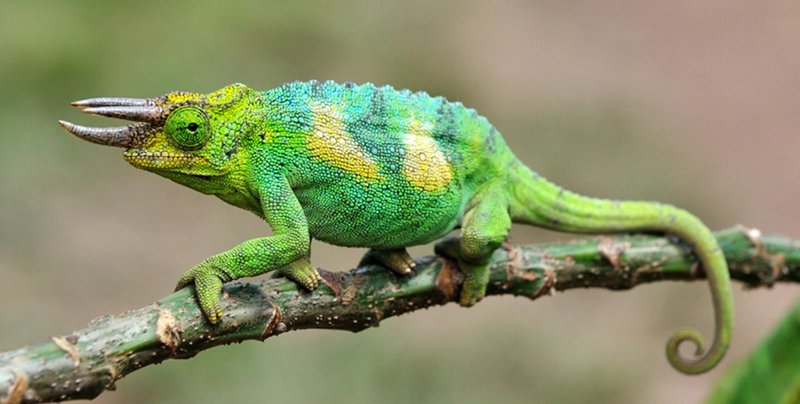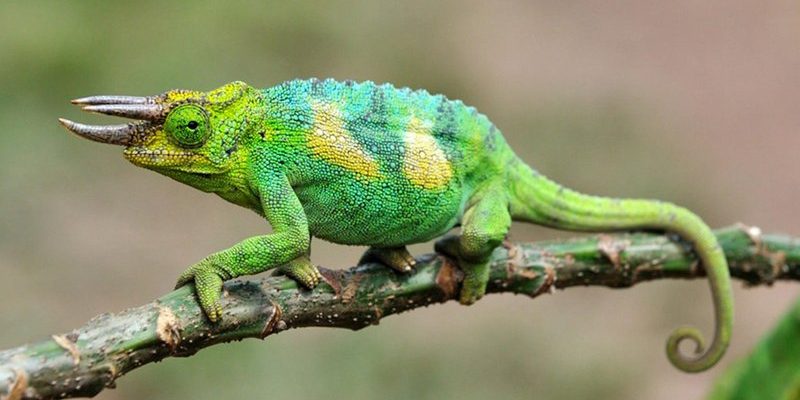
Jackson’s chameleons, native to the lush forests of East Africa, are stunning reptiles. With their vibrant colors and unique ability to change hues, they’re fascinating creatures to observe. However, they have particular needs when it comes to temperature and humidity—sort of like how you might need a cozy blanket and a cup of tea on a chilly day. Keep reading, and you’ll learn how to set up the perfect atmosphere for your Jackson’s chameleon!
Understanding the Natural Habitat
To create the ideal setup for your Jackson’s chameleon, it’s essential to start by understanding their natural habitat. These chameleons come from a tropical environment, where the weather is warm and moist. In the wild, they experience a range of temperatures and humidity levels depending on the time of day and season.
During the day, temperatures in their native environment can reach around 75°F to 85°F (24°C to 29°C). At night, it cools down, dropping to about 60°F to 70°F (15°C to 21°C). This fluctuation helps mimic natural conditions. You might think of it as a gentle reminder for your chameleon that night follows day, just like how we wind down in the evening.
As for humidity, Jackson’s chameleons love a steamy atmosphere. They thrive in humidity levels between 50% and 70%. This moisture is vital for their health, as it helps them breathe better and keeps their skin hydrated. Imagine standing on a beach where the salty air keeps your skin fresh and your lungs full. That’s the kind of environment they need!
Creating the Right Temperature
So how do you ensure your chameleon’s environment stays within that comfortable temperature range? Here are a few effective methods:
- Heat Lamps: Use heat lamps or ceramic heaters to warm up the basking area. This spot should be about 85°F to 90°F (29°C to 32°C), providing a sunny nook for your chameleon to soak up warmth.
- Thermometers: Keeping an eye on temperature is vital. Use thermometers to monitor both the basking area and the cooler side of the enclosure. Aim for a gradient from warm to cool, allowing your chameleon to move around and find its preferred temperature.
- Nighttime Cooling: At night, turn off the heat sources to let the temperature drop naturally. You can add a low-wattage night bulb if it gets too chilly, but make sure it doesn’t disturb their sleep.
Maintaining this temperature range isn’t just about comfort; it’s about promoting proper digestion and body function. If the temperatures are too high or low, your chameleon could become lethargic or even ill.
Managing Humidity Levels
Humidity is another key factor in creating an optimal habitat for your Jackson’s chameleon. Here’s how you can manage those moisture levels effectively:
- Humidity Gauges: Invest in a hygrometer to monitor humidity levels. It’s like having a personal weather station for your chameleon! Check the readings regularly and adjust as needed.
- Misting: Use a spray bottle or an automated misting system to add moisture to their environment. A quick misting once or twice daily can work wonders for raising humidity levels and simulating natural rain.
- Live Plants: Incorporate live plants into their enclosure. They not only provide hiding spots and climbing opportunities but also contribute moisture through transpiration, subtly increasing humidity levels.
Remember, too little humidity can lead to dehydration and shedding issues, while too much can cause respiratory problems. Striking the right balance is key.
Why Temperature and Humidity Matter
You might be wondering, “Why fuss so much over temperature and humidity?” Well, just like you wouldn’t want to sleep in a room that’s too cold or stuffy, your chameleon needs a balanced environment to thrive.
Proper temperature helps regulate their metabolism and energy levels. If they’re too cold, they might become sluggish; if it’s too hot, they can easily get stressed out. Think of it as tuning an instrument—each adjustment can significantly impact the overall sound.
Humidity, on the other hand, is essential for hydration and skin health. If a chameleon is kept in an environment that’s too dry, it could suffer from shedding problems or respiratory infections. Keeping these factors in check is an ongoing responsibility that ensures your pet’s overall well-being.
Signs of Improper Environment
Unfortunately, sometimes we might miss the signs that our chameleons are not comfortable. Here are a few clues to watch for:
- Color Changes: Jackson’s chameleons express emotions through their color—if they go dull or dark, it might be a sign that something’s off. This could be due to stress from improper temperature or humidity.
- Behavior Changes: If your chameleon is hiding more than usual or showing signs of lethargy, it could be reacting to an uncomfortable environment.
- Shedding Issues: If your chameleon struggles with shedding, it might be due to low humidity. Look for old skin stuck on their toes or other parts of their body.
If you notice any of these signs, it’s time to reassess their setup. A quick tweak in temperature or humidity could make a world of difference.
How to Achieve the Ideal Balance
Achieving the right balance between temperature and humidity may feel overwhelming, but it doesn’t have to be. Here are some quick tips to help you get it just right:
1. Do Your Research: Understand your chameleon’s specific needs and monitor the conditions regularly. Knowledge is half the battle.
2. Experiment Slowly: Adjust one factor at a time. You might find that tweaking humidity could also positively affect temperature. Be patient and observe the results.
3. Ask for Help: Reach out to experienced chameleon owners or local pet shops for advice. Sometimes, just hearing someone else’s success story can give you the confidence to make changes.
By taking the time to understand and adjust these environmental factors, you’ll not only make your Jackson’s chameleon more comfortable but also happier and healthier.
In conclusion, setting up the perfect atmosphere for your Jackson’s chameleon takes a bit of work, but it’s ultimately rewarding. By keeping a close eye on temperature and humidity, you’ll be creating a thriving environment for your unique little pet, ensuring they flourish in your care. Happy chameleon keeping!

